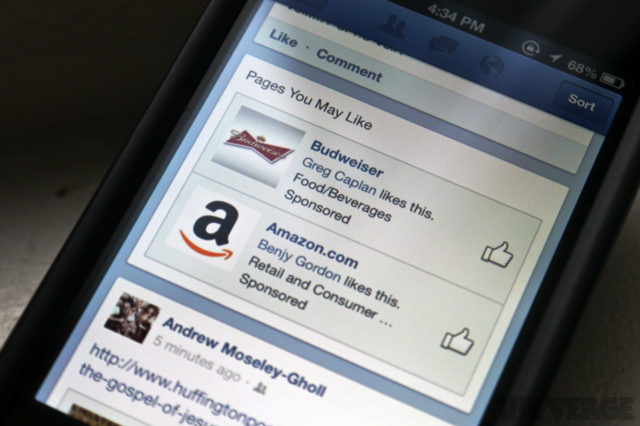
Facebook is going to start grouping advertisements in threes rather than just one at a time. These will come in a horizontal unit known as ‘Pages You Might Like’.
The change was implemented in the News Feed of the desktop version over the weekend. The change helps Facebook to fit more ads into the feed without having to take up too much space.
The idea to fit multiple advertisements into a space that would normally fit one could have come due to the fact that the mobile version of the social platform has been implementing it since August last year.
The new update means that ads on the mobile application will appear simultaneously with those that appear on the desktop version. These are mostly Sponsored Stories meaning that a friend of the user has previously connected to the page. Ads which are not connected however will sometime appear in the unit as well.
The social platform needed to move more ads into its feed rather than have them in the sidebar in order to increase revenue. Ads that are seen in the News Feed have a higher rate of click-throughs and in doing so will be able to create more revenue with every impression.
 Facebook
is able to put more ads into the sidebar of the site, but these are
then not transferred onto the mobile equivalent and so do not create as
much revenue for a business.
Facebook
is able to put more ads into the sidebar of the site, but these are
then not transferred onto the mobile equivalent and so do not create as
much revenue for a business. Although some ads in the News Feed can be disruptive and annoying to users, the chance to be noticed and in the forefront to users is likely to create a larger impact for a business than remaining in the sidebars.
The social giants also began to test a ‘Games your friends are playing’ unit for the desktop feed this weekend. Both of these additions come at a similar time as the addition of ‘More Pages You May Like’ which takes the user to similar Pages that they have just liked.
These updates all show Facebook’s willingness to improve user interaction and maintain that users remain within the site whilst also viewing other pages or businesses.
The increase to having three ads instead of one will obviously see more companies given the opportunity to appear in the News Feed and have a bigger chance of impressions, going on to larger revenue.
What do you think of these changes?
Let us know your thoughts in the comments below

